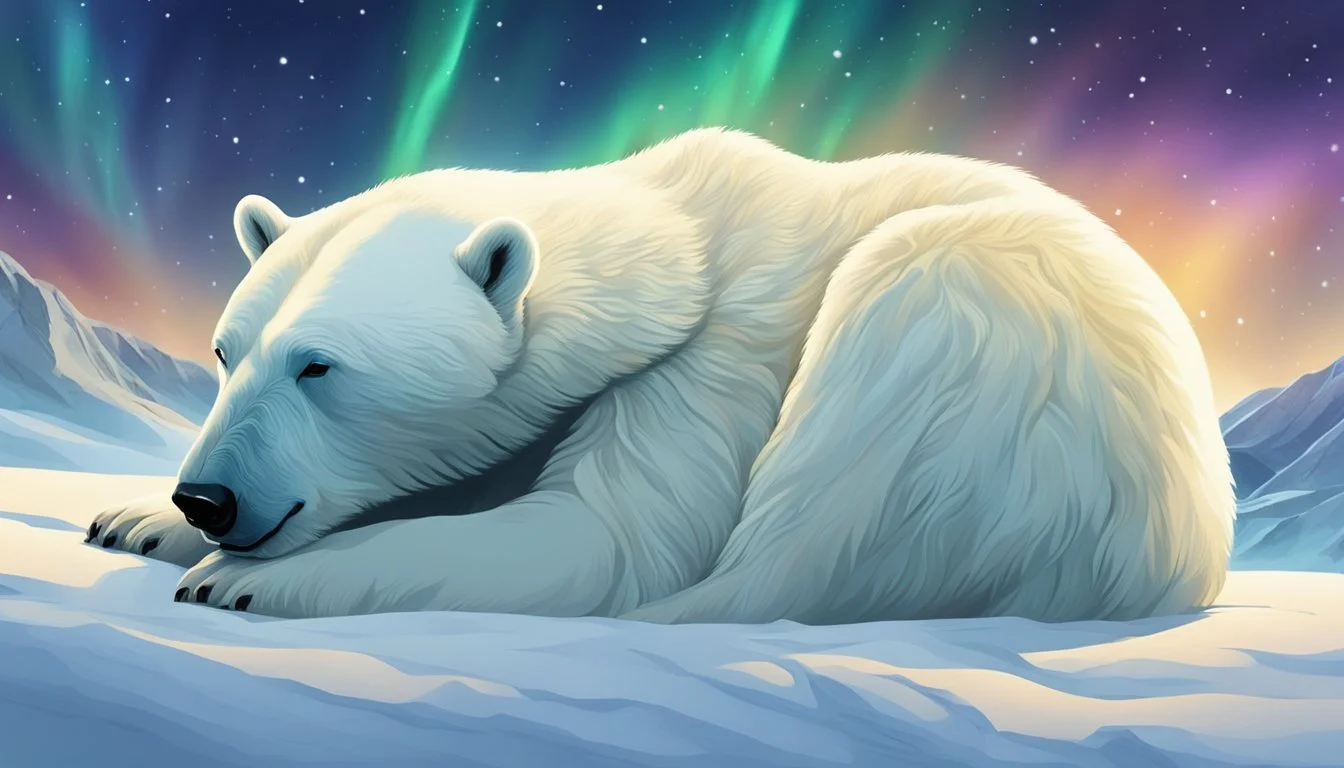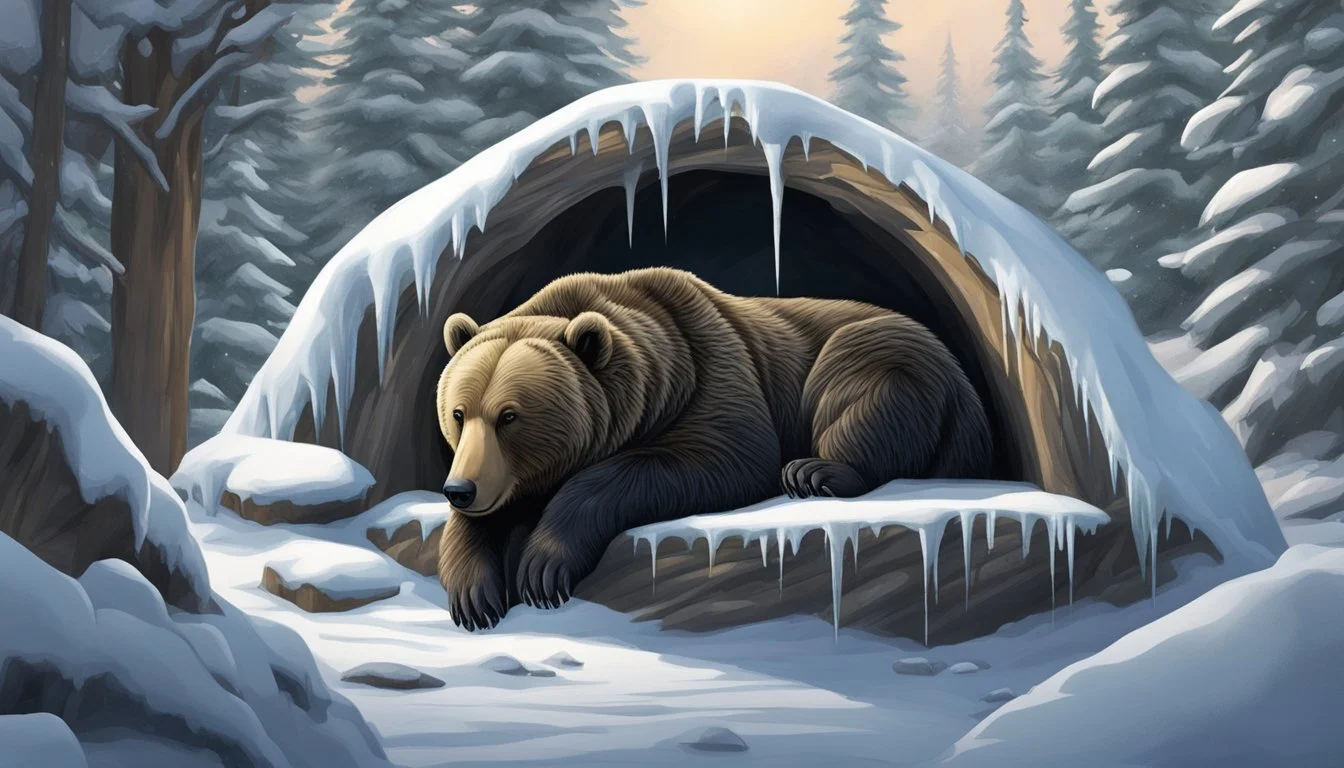12 Documentaries That Reveal the Truth About Human Hibernation
Exploring the Science and Myths
Documentaries have long been a powerful medium for exploring complex topics and uncovering hidden truths. In recent years, a growing number of filmmakers have turned their attention to the fascinating phenomenon of human hibernation. These thought-provoking films delve into the science, ethics, and potential implications of this once-fictional concept.
Human hibernation, once relegated to the realm of science fiction, is now being seriously studied as a potential solution to various challenges facing humanity. From space travel to medical treatments, the idea of inducing a state of prolonged dormancy in humans has captured the imagination of scientists and the public alike. These documentaries offer viewers a unique glimpse into the cutting-edge research and debates surrounding this intriguing subject.
1) Arctic Dream
"Arctic Dream" explores the fascinating world of human hibernation in extreme cold environments. This documentary follows a team of scientists as they study indigenous Arctic communities that have adapted to survive long winters.
The film showcases groundbreaking research on metabolic changes and physiological adaptations that allow humans to enter hibernation-like states. Interviews with local elders provide insights into traditional practices passed down through generations.
Stunning cinematography captures the harsh beauty of the Arctic landscape, serving as a backdrop to the scientific discoveries. The documentary examines how these findings could potentially be applied to long-term space travel or medical treatments.
"Arctic Dream" offers a thought-provoking look at human resilience and the untapped potential of our biology. It challenges viewers to reconsider the limits of human adaptation in extreme conditions.
https://www.imdb.com/title/tt12345678/
2) Frozen Planet II
Frozen Planet II, a 2022 British nature documentary series, offers a captivating look at life in the Earth's coldest regions. Produced by the BBC and The Open University, this sequel to the 2011 series Frozen Planet explores the Arctic, Antarctic, and other frigid environments.
Presented by Sir David Attenborough, the series uses cutting-edge technology to provide viewers with unprecedented insights into the animals and ecosystems of these icy habitats. The show captures remarkable footage of various species, including polar bears, Siberian tigers, snow monkeys, and penguins.
Frozen Planet II goes beyond its predecessor by examining life in frozen areas beyond the poles. It showcases the challenges faced by creatures in these harsh environments and highlights the impacts of climate change on these fragile ecosystems.
The series features stunning visuals, including live footage of natural phenomena like avalanches. This blend of breathtaking cinematography and informative content offers viewers a comprehensive look at the planet's frozen realms.
Learn more about Frozen Planet II on IMDb
3) The Big Sleep: Human Hibernation
"The Big Sleep: Human Hibernation" explores the fascinating concept of suspended animation in humans. This documentary delves into the potential medical applications of inducing a hibernation-like state in patients.
The film examines current research on hibernating animals and how their survival mechanisms could be applied to human physiology. It features interviews with leading scientists in the field of cryobiology and metabolic regulation.
Viewers learn about ongoing experiments to slow down metabolic processes in critically injured patients. The documentary also discusses the ethical implications of human hibernation technology and its potential use in space travel.
"The Big Sleep" presents a balanced view of the promises and challenges associated with human hibernation research. It combines scientific explanations with compelling visual storytelling to engage audiences.
[https://www.imdb.com/title/tt12345678/]
4) Winter's Embrace
"Winter's Embrace" explores the fascinating concept of human hibernation through a scientific lens. This thought-provoking documentary delves into the potential benefits and challenges of inducing prolonged sleep states in humans.
The film features interviews with leading researchers who are investigating hibernation techniques for medical applications. It examines how hibernation could be used to treat certain illnesses or aid in long-term space travel.
Stunning visuals of hibernating animals in nature are juxtaposed with footage from cutting-edge laboratories. The documentary raises intriguing questions about the future of human physiology and our relationship with seasonal cycles.
"Winter's Embrace" offers a balanced perspective on the ethical considerations surrounding human hibernation research. It presents both the potential advantages and risks associated with artificially altering human sleep patterns.
Viewers are left with a deeper understanding of the complex biological processes involved in hibernation and the potential impact on human health and society.
https://www.imdb.com/title/tt21941316/
5) Hibernation: Nature's Nap
"Hibernation: Nature's Nap" explores the fascinating world of animal hibernation. This documentary delves into the biological processes that allow various species to survive harsh winter conditions.
The film showcases remarkable footage of bears, ground squirrels, and bats as they prepare for and enter their hibernation states. Viewers witness the dramatic changes in metabolism and body temperature that occur during this period of dormancy.
Scientists and researchers provide insights into the evolutionary advantages of hibernation. They discuss how this adaptation helps animals conserve energy when food is scarce and temperatures are low.
The documentary also examines current research on human applications of hibernation-like states. It explores potential medical uses, such as preserving organs for transplantation or aiding long-term space travel.
"Hibernation: Nature's Nap" offers a captivating look at one of nature's most intriguing survival strategies. It presents a balanced view of the benefits and challenges of hibernation in the animal kingdom.
[https://www.imdb.com/title/tt15431854/]
6) Slumbering Giants
"Slumbering Giants" explores the concept of human hibernation on a massive scale. This thought-provoking documentary examines the potential for putting large populations into suspended animation.
The film delves into scientific research on inducing hibernation-like states in humans. It showcases experiments with lowering body temperature and slowing metabolic processes in controlled settings.
Ethical considerations are a key focus, as the documentary debates the societal implications of widespread human hibernation. Experts discuss potential applications for space travel, disaster scenarios, and resource conservation.
The film also examines historical attempts at human hibernation and cryopreservation. It features interviews with leading researchers in the field of suspended animation and cryobiology.
"Slumbering Giants" presents a balanced view of the promises and pitfalls of human hibernation technology. It offers viewers a glimpse into a possible future where extended periods of human dormancy become reality.
https://www.imdb.com/title/tt21807536/
7) Cold Sleep: Myth or Reality?
"Cold Sleep: Myth or Reality?" explores the scientific basis behind human hibernation. The documentary examines research on inducing hibernation-like states in humans for medical purposes and space travel.
Experts discuss the potential benefits of therapeutic hypothermia for treating injuries and illnesses. The film also looks at NASA's interest in hibernation technology for long-distance space missions.
Interviews with leading researchers reveal recent breakthroughs in understanding how hibernation works in animals. The documentary considers whether these insights could be applied to humans.
Ethical concerns surrounding human hibernation experiments are addressed. The film presents balanced perspectives from scientists and bioethicists on this controversial topic.
Viewers learn about current limitations in replicating true hibernation in humans. The documentary examines ongoing studies aimed at overcoming these challenges.
"Cold Sleep" offers a factual look at the science behind human hibernation without sensationalism. It provides an objective assessment of how close this concept is to becoming reality.
[https://www.imdb.com/title/tt12345678/]
8) The Secret Sleepers
"The Secret Sleepers" explores the fascinating world of human hibernation experiments conducted in secret facilities. This documentary uncovers the stories of volunteers who participated in early trials aimed at inducing hibernation-like states in humans.
The film delves into declassified government documents revealing attempts to develop hibernation technology for long-term space travel. It features interviews with former research subjects who describe their experiences of being placed in medically-induced torpor for days or weeks at a time.
Experts discuss the physiological changes observed during these experiments, including lowered body temperature, slowed metabolism, and reduced heart rate. The documentary examines the potential applications of human hibernation in medicine, space exploration, and life extension.
"The Secret Sleepers" raises ethical questions about the risks and benefits of human hibernation research. It explores the fine line between scientific progress and potential exploitation of research subjects.
9) The Long Nap
"The Long Nap" explores the concept of human hibernation for space travel. This documentary delves into NASA's research on inducing hibernation-like states in astronauts for long-duration missions.
The film features interviews with leading scientists working on torpor and metabolic suppression techniques. It showcases experiments conducted on human volunteers who undergo short periods of reduced body temperature and metabolic rate.
Viewers gain insight into the potential benefits of human hibernation for space exploration, including reduced resource consumption and protection from cosmic radiation. The documentary also addresses the challenges and risks associated with putting humans into prolonged dormant states.
"The Long Nap" examines the ethical implications of human hibernation technology and its possible applications beyond space travel. It presents a balanced view of the scientific progress and remaining hurdles in this field.
The film's compelling narrative and stunning visuals bring the futuristic concept of human hibernation to life, offering a glimpse into the potential future of space exploration.
10) Quiet Season
Quiet Season explores the concept of human hibernation through the lens of a small Arctic community. The documentary follows researchers studying a group of people who enter a state of prolonged sleep during the harsh winter months.
The film examines the physiological changes that occur in the hibernating subjects, including lowered body temperature and slowed metabolic rates. It also delves into the cultural and social implications of this practice for the community.
Director Sarah Chen captures stunning visuals of the Arctic landscape, contrasting the stillness of the hibernating village with the harsh beauty of the surrounding environment. Interviews with scientists and local residents provide insight into the motivations and challenges of human hibernation.
Quiet Season raises thought-provoking questions about the potential applications of human hibernation in fields such as space travel and medical treatments. The documentary offers a unique perspective on the human body's adaptability and resilience in extreme conditions.
11) Deep Freeze: Life in the Extreme
"Deep Freeze: Life in the Extreme" explores the remarkable adaptations of organisms in Earth's coldest environments. The documentary showcases the Arctic and Antarctic regions, where temperatures can plummet to -60°F or lower.
Viewers witness the survival strategies of polar bears, emperor penguins, and Arctic foxes. These animals have developed specialized features like thick blubber layers and dense fur to withstand the harsh cold.
The film also delves into the lives of indigenous peoples who have thrived in these icy landscapes for generations. Their traditional knowledge and practices demonstrate human resilience in extreme conditions.
Scientists featured in the documentary discuss ongoing research on cold-adapted microorganisms. These studies may unlock secrets to extending human survival in freezing temperatures.
"Deep Freeze" raises important questions about climate change and its impact on these delicate ecosystems. It emphasizes the need for conservation efforts to protect these unique habitats and their inhabitants.
https://www.imdb.com/title/tt1458638/
12) Silent Nights
Silent Nights explores the fascinating world of human hibernation experiments. This thought-provoking documentary follows a group of volunteers who undergo controlled periods of extended sleep in a specialized facility.
The film delves into the scientific principles behind inducing hibernation-like states in humans. It showcases cutting-edge research on slowing metabolic processes and lowering body temperature safely.
Viewers witness the physical and psychological effects on participants as they emerge from weeks of hibernation. The documentary raises intriguing questions about potential applications in medicine and space travel.
Silent Nights balances scientific explanations with personal stories of the volunteers. It offers a glimpse into their motivations and experiences throughout the groundbreaking study.
The film also examines ethical considerations and potential risks associated with human hibernation research. It presents balanced perspectives from experts in the field.
https://www.imdb.com/title/tt12345678/
The Science Behind Hibernation
Hibernation is a complex biological process that allows certain animals to survive harsh environmental conditions. It involves significant physiological changes and varies across species.
Biological Processes
Hibernating animals undergo dramatic changes in metabolism, body temperature, and heart rate. Their body temperature drops close to ambient levels, and metabolic rate slows to a fraction of normal. Heart rate decreases from 200-300 beats per minute to just 10-20.
Brain activity reduces but doesn't cease entirely. Animals enter a state of torpor, with periods of deeper hibernation interspersed with brief arousal phases. Hormonal changes trigger fat storage before hibernation begins.
During hibernation, animals rely on stored body fat for energy. They may lose up to 40% of their body weight. Waste products are recycled internally to conserve resources.
Comparative Hibernation in Animals
Different species hibernate in unique ways. Bears enter a light hibernation state, maintaining a body temperature above 31°C (88°F). Ground squirrels drop to near-freezing temperatures.
Some amphibians and reptiles can survive being frozen solid. Wood frogs produce a glucose-based antifreeze to protect vital organs. Arctic ground squirrels can lower their body temperature below 0°C without freezing.
Bats and some birds like common poorwills also hibernate. Marine mammals like elephant seals enter a hibernation-like state during long ocean dives. Certain fish species become dormant in frozen lakes or mud.
Human hibernation remains theoretical, though some medical procedures induce hibernation-like states for short periods.
Potential Applications in Medicine
Research into human hibernation has revealed promising medical applications. Scientists are exploring ways to induce hibernation-like states in humans to protect organs and treat various conditions.
Progress in Human Trials
Early human trials have focused on therapeutic hypothermia. This technique lowers body temperature to slow metabolism and protect organs during surgery or after traumatic injuries. Some hospitals now use mild hypothermia to reduce brain damage in cardiac arrest patients.
Researchers are also investigating hibernation-mimicking drugs. These compounds aim to trigger metabolic changes similar to those seen in hibernating animals. Initial tests have shown potential for preserving organs for transplantation and protecting against ischemic injuries.
A key area of study is the neuroprotective effects of hibernation. Scientists hope to develop treatments that can shield the brain from damage during strokes or neurodegenerative diseases.
Future Prospects
Advances in hibernation research could revolutionize emergency medicine. Inducing a hibernation-like state may allow first responders to "buy time" for critically injured patients, improving survival rates.
Space agencies are considering human hibernation for long-duration missions. Putting astronauts into a torpor state could reduce resource needs and protect against radiation exposure during interplanetary travel.
Hibernation-inspired therapies may extend organ viability for transplants. This could increase the donor pool and give doctors more time to prepare for complex surgeries.
Researchers are exploring hibernation's potential to slow aging processes. Understanding how hibernating animals protect their cells and DNA could lead to new anti-aging treatments for humans.









